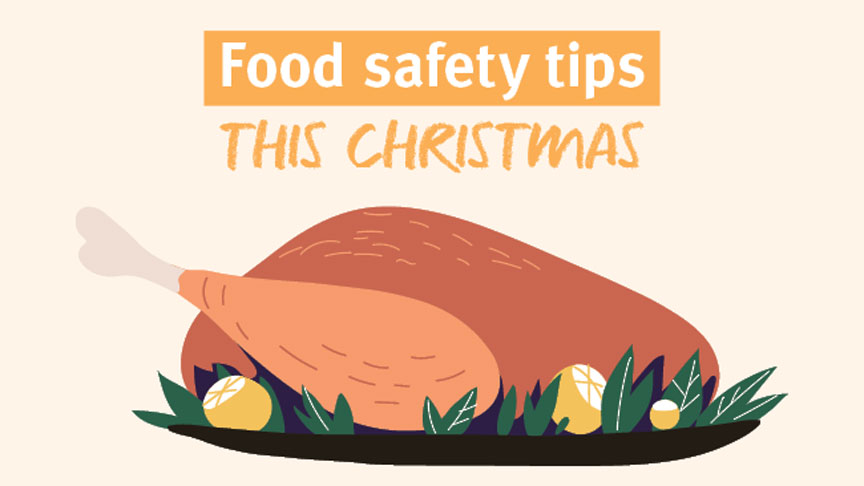
For majority of us the holiday season means tables piled high with a multitude of delicious dishes, that all too often go back into the fridge to be consumed as leftovers for the next few meals.
Our dietician, Danielle, has written some helpful tips to ensure your food this holiday season remains free of nasty microbes, leaving room for you to continue to eat, drink and be merry!
How to use leftover meats
Once your meat is out of the oven ready to be served to your guests, separate out only what you will need for that meal. Wrap the remainder of meat and label it with the date. Leave it on the bench to cool for approximately 30 minutes. If you put the meat straight in the fridge when it is hot, it will raise the temperature of your fridge or freezer which can put other foods at risk.
Refrigerated left over meats safely last two to three days, or one month in the freezer.
Once the meat is defrosted and re-used, it cannot be frozen again. To save wasting meat, initially freeze the meat in portion sizes that you will use in a single meal.
Before eating any defrosted left-overs, ensure you reheat the meat to be very hot and steaming all the way through, which should be least 70 degrees.
For more information about these handy tips, click here for a brochure that further discusses cooling and reheating food safely.
No one wants to spend their Christmas holidays with a case of food poisoning. Follow these food safety tips this Christmas:
- Don’t put hot foods in the fridge! You need to let the food cool down slightly first. Foods can sit out on your kitchen bench for two hours once they drop below 60 degrees.
- Don’t overcrowd your fridge. The cool air needs room to circulate around your food. If your fridge is too full, the temperature can rise, resulting in your food being in the danger zone for bacterial growth.
- Use esky’s for things that don’t NEED to be kept in the fridge for example drinks, vegetables, fruits and water bottles. This creates more space for the perishable items to be placed in your fridge.
- Plan efficiently for the number of people you are serving. Leftovers need to be considered carefully.
- If something has been out on the table for too long put it in the bin. Remember, two hours maximum is the recommended “safe” time.
- Try and keep foods on display out of direct sun, over ice bricks and/or covered to keep away insects.
- Make sure raw meats are stored at the bottom of your fridge to ensure juices can’t drip onto foods underneath.
- Ensure any food reheated is cooked to 70 degrees and steaming all the way through.
- Use separate chopping boards for raw meat and ready-to-eat foods
Test your food safety knowledge by taking the Raw and Risky Food Safety Quiz at www.foodsafety.asn.au
Want to learn more about food safety in Queensland, and how to protect your family’s health, visit www.health.qld.gov.au/foodsafety
References
http://www.foodstandards.gov.au/foodsafety/Pages/default.aspx
https://www.health.qld.gov.au/public-health/industry-environment/food-safety